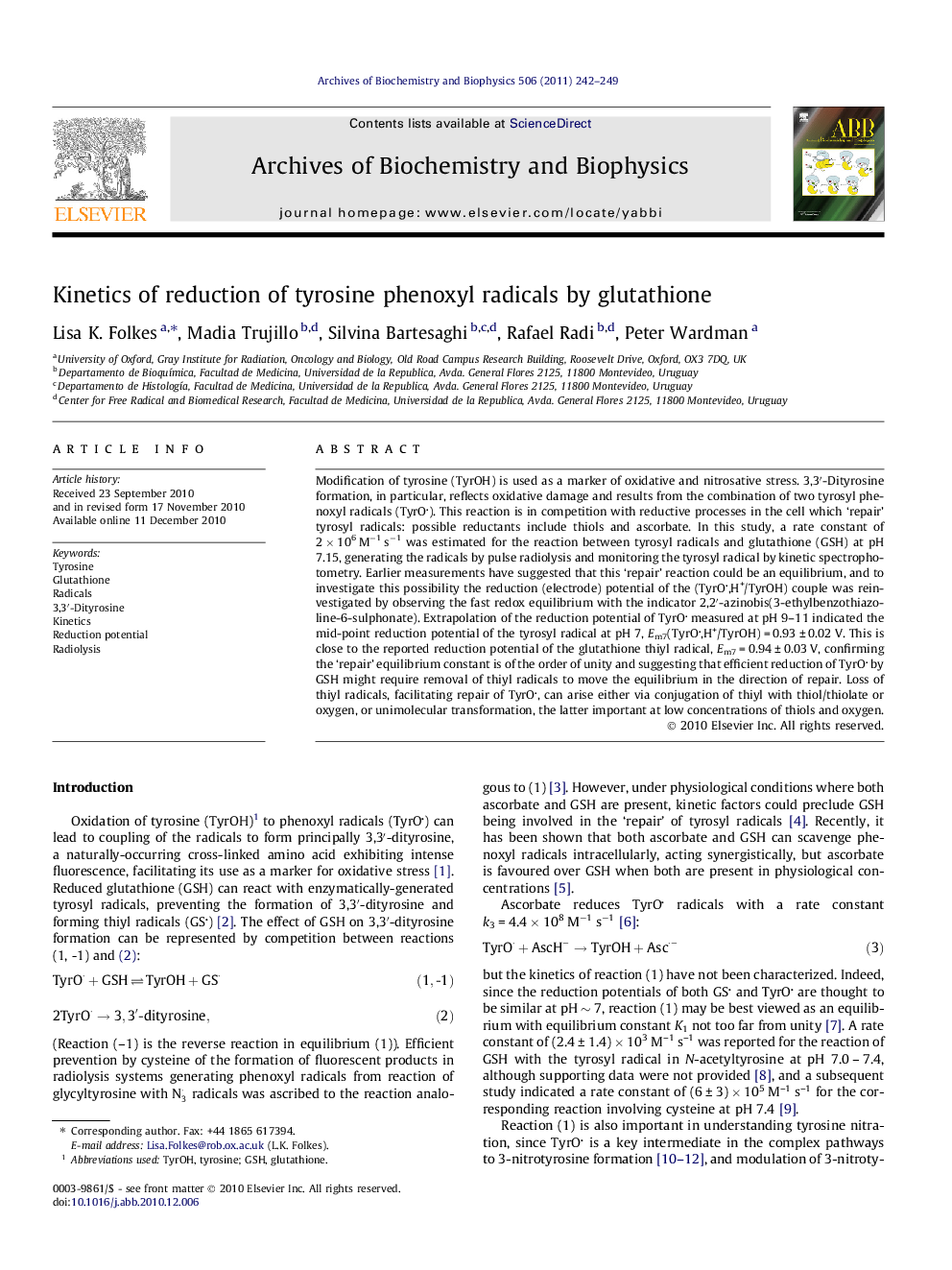| کد مقاله | کد نشریه | سال انتشار | مقاله انگلیسی | نسخه تمام متن |
|---|---|---|---|---|
| 1925803 | 1536419 | 2011 | 8 صفحه PDF | دانلود رایگان |

Modification of tyrosine (TyrOH) is used as a marker of oxidative and nitrosative stress. 3,3′-Dityrosine formation, in particular, reflects oxidative damage and results from the combination of two tyrosyl phenoxyl radicals (TyrO). This reaction is in competition with reductive processes in the cell which ‘repair’ tyrosyl radicals: possible reductants include thiols and ascorbate. In this study, a rate constant of 2 × 106 M−1 s−1 was estimated for the reaction between tyrosyl radicals and glutathione (GSH) at pH 7.15, generating the radicals by pulse radiolysis and monitoring the tyrosyl radical by kinetic spectrophotometry. Earlier measurements have suggested that this ‘repair’ reaction could be an equilibrium, and to investigate this possibility the reduction (electrode) potential of the (TyrO,H+/TyrOH) couple was reinvestigated by observing the fast redox equilibrium with the indicator 2,2′-azinobis(3-ethylbenzothiazoline-6-sulphonate). Extrapolation of the reduction potential of TyrO measured at pH 9–11 indicated the mid-point reduction potential of the tyrosyl radical at pH 7, Em7(TyrO,H+/TyrOH) = 0.93 ± 0.02 V. This is close to the reported reduction potential of the glutathione thiyl radical, Em7 = 0.94 ± 0.03 V, confirming the ‘repair’ equilibrium constant is of the order of unity and suggesting that efficient reduction of TyrO by GSH might require removal of thiyl radicals to move the equilibrium in the direction of repair. Loss of thiyl radicals, facilitating repair of TyrO, can arise either via conjugation of thiyl with thiol/thiolate or oxygen, or unimolecular transformation, the latter important at low concentrations of thiols and oxygen.
Research highlights
► Glutathione reduces tyrosyl radicals ∼220 × slower than ascorbate at pH 7.
► Reduction potential of the tyrosyl radical is similar to glutathione radical.
► Equilibrium constant for reduction of tyrosyl radicals by glutathione is ∼1.
Journal: Archives of Biochemistry and Biophysics - Volume 506, Issue 2, 15 February 2011, Pages 242–249